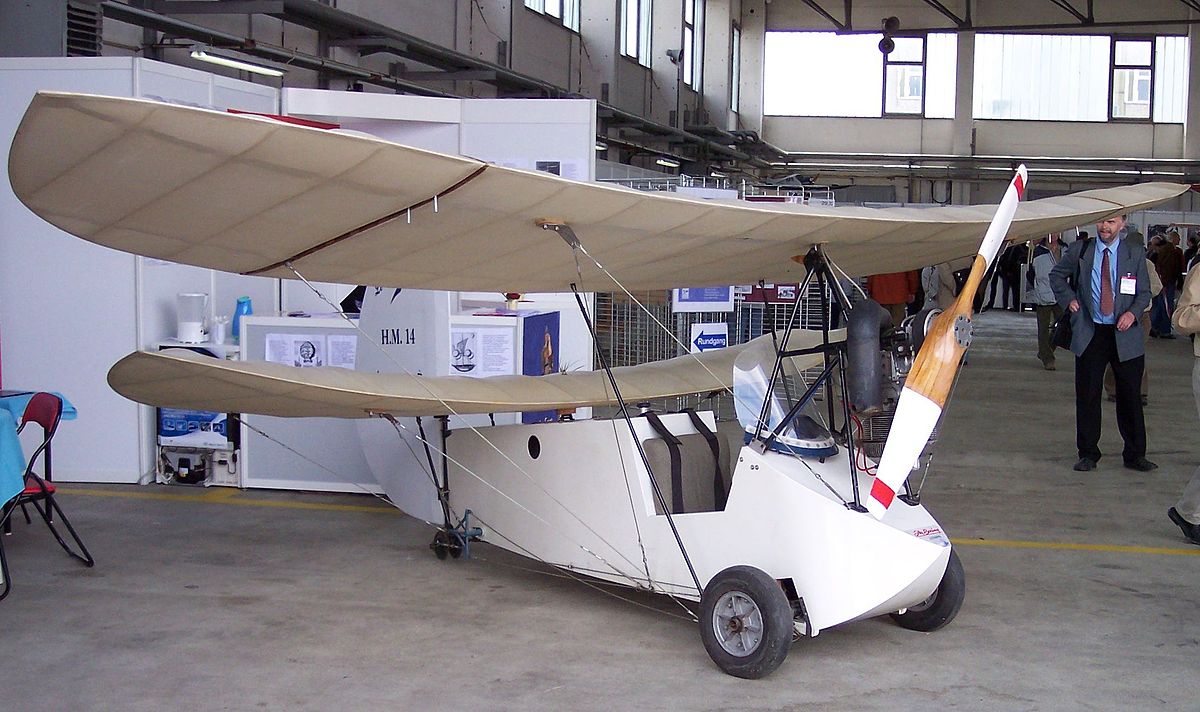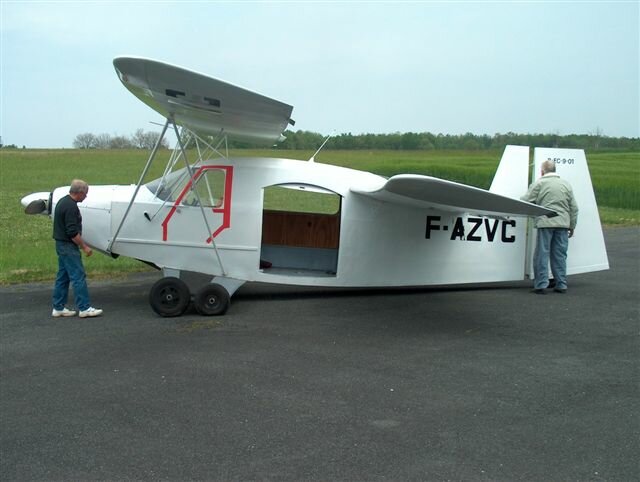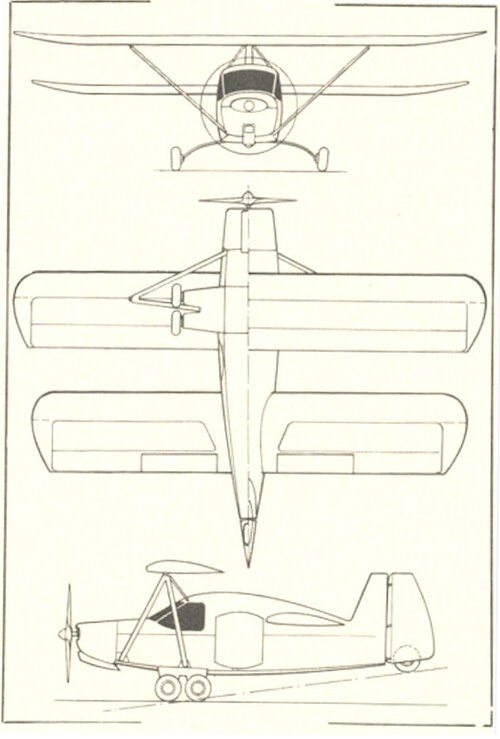My understanding is Delanne found a 'sweet spot' for vertical and horizontal separation, providing 'constructive interference'. The Germans, unable to 'reverse engineer' his design to apply to bigger aircraft, handled him unkindly...
I still get the giggles when I see pics of the Delanne-style STOL Lysander conversion with that ruddy great 'bomber' turret on its butt.
I must wonder if it was intended for nocturnal jaunts into Occupied France, when tail-gunner would have given unwary Luftwaffe night-fighters a very nasty surprise. And mowed down Feldgrau who emerged from the field's hedgerow...
Post-war, I was very impressed by the Lockspeiser design, intended for back-country / rough-field work, its bay sized to ferry spare wings, engine etc to stranded sibs. Sadly, the flown sub-scale prototype was destroyed in a hangar fire...
I have read that the Lysander was intended for strafing the beaches during the expected German invasion following the fall of France.
Westland's test pilot Harald Penrose tells (
Adventure with Fate, pp.184-188) how the tandem Lysander was the fourth attempt at such an invasion-attack conversion, following the fitting of twin Oerlikon cannon, followed by the "Pregnant Perch" with ventral gun turret and yet another with dorsal turret replacing the rear cockpit. All had turned out to be bad ideas.
Chief Designer WEW Petter's mind then went back to five years earlier, when Penrose and Arthur Davenport had met Mignet with his Flying Flea. Davenport (after forbidding Penrose from flying the evil-looking little critter) had subsequently suggested building a transport version with good CG range.* The Delanne tandem-wing had recently hit the news and Petter now put two-and-two together.
France had not yet fallen, so he and and Penrose were able to go over and meet Delanne. The Frenchman was building his latest plane "in a nearby stable" and Petter was much impressed by it, while Penrose got to fly one of the sub-scale test planes, the Delanne 20, at Villacoublay and was equally impressed.
The Arsenal works went on to build Delanne's next design to fly, the Arsenal-Delanne 10. Penrose also notes that "Petter's ... tandem-wing Lysander and the Delanne equivalent ... were mutually influenced." But whether the Arsenal machine was the one from the stable finished off, or a new design following the Westland visit, is not recorded.
By the way, the Internet is full of the designations P.12 and "Wendover" for the tandem Lysander. I have half a dozen references discussing it, and none refers to either of these designations. They refer to it only as the tandem Lysander, the Delanne Lysander or the Lysander Duo-Mono. Does anybody know the source of the other two?
* Someone in France has produced a homebuild light transport in the form of a giant Flea, I can't recall who offhand.




